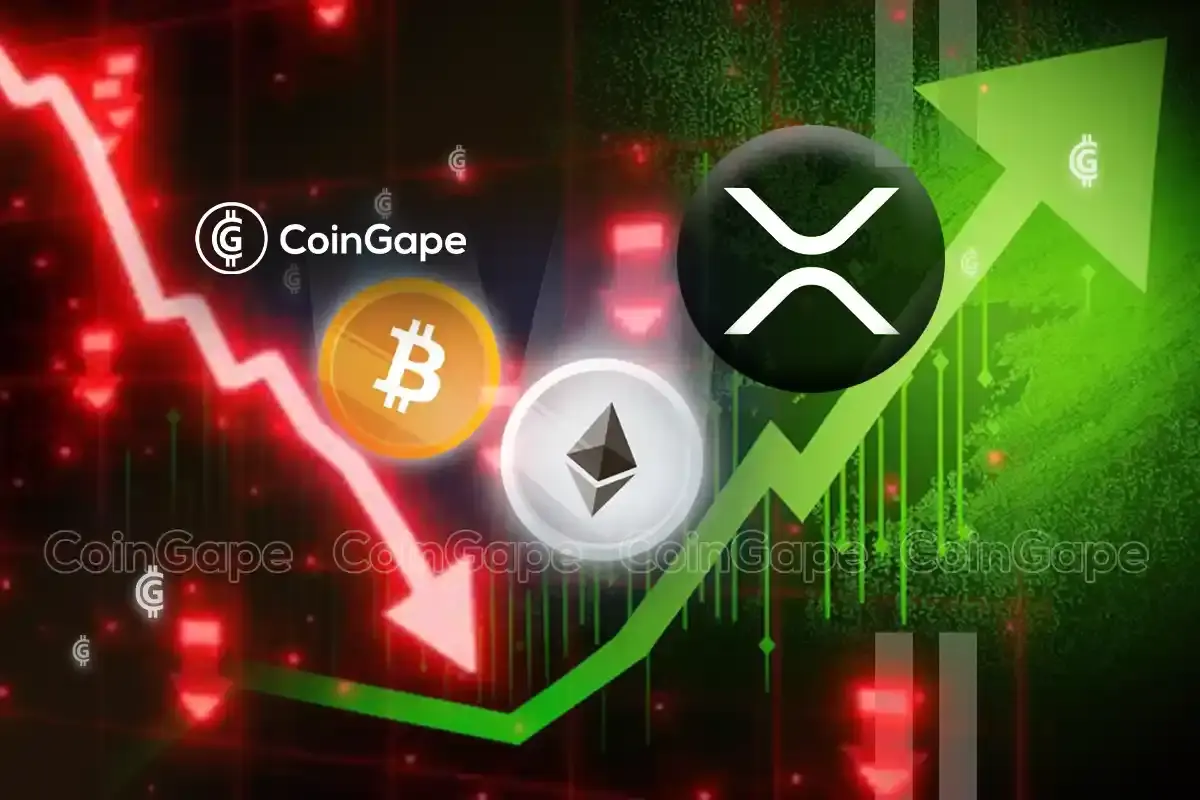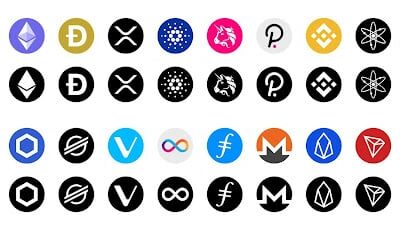Ethereum
Why Staking Was Removed from Ethereum ETFs to Get SEC Approval

The removal of Ethereum ETF staking was driven by regulatory pressure from the United States Securities and Exchange Commission (SEC). Issuers have amended their ETF filings to exclude staking provisions prior to the approvals on May 23. This strategic change aims to align with SEC regulatory expectations to enable approval of their Ethereum ETFs.
Is the ETH staked a security?
Staking, which involves locking crypto to validate transactions in exchange for rewards, is an important feature of Ethereum’s proof-of-stake (PoS) mechanism. However, the SEC considers staking services to potentially constitute unregistered securities offerings. This prospect has led to actions against major crypto platforms like Coinbase and Kraken for offer staking services and alleging violations of the federal securities laws. Therefore, ETF issuers staking removed of their proposals to avoid similar legal challenges.
The SEC’s classification of staked ETH as a security is based on the application of the Howey Test, which determines whether an asset qualifies as an investment contract. According to the SEC, staking involves investing money when users lock up their ETH in exchange for potential returns, thereby satisfying the first prong of the Howey Test. The second prong, joint enterprise, is achieved when stakeholders contribute to a shared ecosystem and rely on the collective efforts of network validators and developers to secure and maintain the network. The third prong, the expectation of profits, is satisfied because bettors anticipate rewards in the form of additional tokens. Finally, the SEC argues that these profits come primarily from the efforts of others, such as validators and developers who ensure the functionality and security of the network. This interpretation aligns staking with the characteristics of an investment contract, thereby subjecting it to securities regulation.
Why staked ETH is not security
Opponents argue that staking should not be classified as a security because it fundamentally differs from traditional investment contracts. Staking involves locking tokens to support network operations and earn rewards, which is more like a technical service than an investment program. Staking rewards arise from network protocol and market conditions, not from the management efforts of a third party, which calls into question the application of the “efforts of others” prong of the Howey test.
The SEC’s enforcement actions against staking services, such as those involving Kraken and Coinbase, have been criticized for lacking clear guidance and creating a climate of regulatory uncertainty. Critics argue that the SEC’s use of enforcement rather than providing explicit regulatory frameworks leaves crypto businesses and investors in a precarious position, unsure of how to comply with the law. This approach is seen as inefficient and unfair, particularly in an emerging sector that requires clear and consistent regulations to foster growth and innovation.
Additionally, the decentralized nature of many staking activities complicates the SEC’s assertion that staking primarily relies on the efforts of others. In decentralized networks, validators and stakers operate independently, and network security and functionality are maintained through collective effort rather than centralized management. This decentralization challenges the idea that staking constitutes a joint enterprise under the Howey test.
Additionally, critics say the SEC’s actions could conduct offshore staking activities, reducing US influence in the global crypto market and potentially undermining investor protections. By pushing staking services to jurisdictions with more favorable regulations, the SEC could inadvertently encourage less oversight and greater risks for U.S. investors.
Finally, the SEC’s position could hinder the broader adoption and development of blockchain technology. Staking is a crucial part of proof-of-stake networks, designed to be more energy efficient than their proof-of-work counterparts. By imposing strict regulations on staking, the SEC could limit the potential benefits of DeFi and other blockchain-based innovations.
ETFs staked with ETH and Ethereum
The SEC approval process for Ethereum ETFs involves submitting Forms 19b-4 for exchange listing and Forms S-1 detailing fund management. Although the SEC has approved Forms 19b-4, Forms S-1 are still in the study. Excluding staking from these deposits is necessary to meet SEC regulatory requirements and facilitate the approval process.
The removal of Ethereum ETF staking has sparked debate within the crypto community. Many investors highly value staking for the yield it generates, and its absence in Ethereum ETFs could decrease considerably its attractiveness compared to direct purchases of Ethereum, where invhttp://stakingestors can engage in staking activities. Brian Rudick, senior strategist at GSR, highlighted the “immediate opportunity cost” of holding Ether in an ETF that does not offer staking.
Despite these concerns, the potential benefits of the Ethereum blockchain remain a topic of interest. Eliminating ETF staking could have broader supply, network security, and decentralization implications due to less ETH staking.
Unlike the United States, Hong Kong’s Securities and Futures Commission (SFC) is consider allowing staking for Ethereum ETFs. This approach aims to boost the attractiveness of these ETFs by providing passive income opportunities through staking, which could potentially boost investor interest and support Hong Kong’s ambitions to become a global crypto hub.
Ultimately, the removal of staking from Ethereum ETFs directly addresses SEC regulatory concerns and lawsuits against staking services. This strategic adjustment of ETF issuers aims to align with regulatory expectations and gain approval despite a potential reduction in the attractiveness of these ETFs compared to direct investments in Ethereum.
Will staking be enabled later? Time will tell, and all eyes will be on the SEC and its decision to classify Ethereum and staked ETH in the weeks and months to come.
Latest Alpha Market Report
Ethereum
Cryptocurrency liquidations surpass $200 million as Ethereum and Bitcoin plummet

Cryptocurrency market liquidations hit their highest level in a week on Wednesday as the price of Bitcoin fell below $60,000.
Over the past 24 hours, over 74,000 traders have been liquidated for $208 million, CoinGlass the data shows it.
The majority of those losses, about $184 million, went to investors holding long positions who had bet on a price rise.
The largest liquidations hit Ethereum investors, at $55.5 million, almost entirely on long positions, the data showed.
Current issues surrounding US monetary policy, geopolitical tensions, and the upcoming US presidential election in November are expected to impact the price of the leading cryptocurrency throughout 2024.
Bitcoin abandoned The stock price fell from $62,200 to $59,425 intraday. The asset has since recovered its losses above $60,200, but is still down 3% over the past 24 hours.
Solana, the world’s fifth-largest cryptocurrency by market capitalization, was the worst hit among the top 10 cryptocurrencies, down about 8% to $140. Solana had been riding high on New York investment management firm VanEck’s filing of its Solana Trust exchange-traded fund late last month.
Major cryptocurrencies have been falling over the past month. Ethereum has fallen more than 12% over 30 days despite growing interest in the launch of Ethereum spot ETFs.
Some analysts predict that new financial products could begin marketing in mid-Julywith at least one company predicting that the price of ETH will then take offBitcoin is down 12% over the same period.
Certainly, analysts always see further price increases this yearThe current market cooling represents a precursor to another major price surge in the coming months, Decrypt reported Monday.
On Wednesday, analytics firm CryptoQuant released a report examining Bitcoin Mining Metrics and highlighted the conditions for a return of prices to current levels.
Edited by Sebastian Sinclair.
Ethereum
Volume up 90%: good for ETH price?

Ethereum (ETH) has emerged as a beacon in the sea of blockchains, with a staggering 92% increase in decentralized application (dApp) volume over the past week. But the news comes with a layer of complexity, revealing a landscape of both opportunity and potential setbacks for the leading blockchain.
Cheap gas fuels the fire
Analysts attribute the explosion in decentralized application volume to the Dencun upgrade in March, which significantly reduced gas costs – the cost associated with processing transactions on the Ethereum network.
Lower transaction fees have always attracted users, and this recent development seems to be no exception. The surge in activity suggests a revitalized Ethereum that is likely to attract new projects and foster a more vibrant dApp ecosystem.
NFT craze drives numbers up
While overall dApp volume (see chart below) paints a positive picture, a closer look reveals a more nuanced story. This surge appears to be driven primarily by an increase in NFT (non-fungible token) trading and staking activity.
 Source: DappRadar
Source: DappRadar
Apps like Blur and Uniswap’s NFT aggregator have seen significant surges, highlighting the rise of the NFT market on Ethereum. This trend indicates a thriving niche in the Ethereum dApp landscape, but raises questions about the platform’s diversification beyond NFTs.
A look at user engagement
A curious problem emerges when looking at user engagement metrics. Despite the impressive increase in volume, the number of unique active wallets (UAWs) on the Ethereum network has actually decreased.
Ethereum is now trading at $3,316. Chart: TradingView
This disconnect suggests that current activity could be driven by a smaller, more active user base. While high volume is certainly a positive indicator, seeing broader user participation is essential to ensuring the sustainability of the dApp ecosystem.
A glimmer of hope ?
A positive long-term indicator for Ethereum is the trend of decreasing holdings on the exchange, as reported by Glass nodeThis suggests that ETH holders are moving their assets off exchanges, potentially reducing selling pressure and contributing to price stability.
If this trend continues, ETH could potentially target $4,000 this quarter or even surpass its all-time high. However, this price prediction remains speculative and depends on various market forces.
 Ether price expected to rise in coming weeks. Source: CoinCodex
Ether price expected to rise in coming weeks. Source: CoinCodex
Ethereum at a Crossroads
Ethereum is at a crossroads. Dencun Upgrade has clearly revitalized dApp activity, particularly in the NFT space. However, uneven dApp performance and the decline of the UAW are raising concerns about the long-term sustainability of this growth. Network growth, measured by the number of new addresses joining the network, is also slowing, according to Santiment, which could potentially hamper wider adoption.
The short-term price outlook for ETH remains uncertain. While long-term indicators, such as declining exchange holdings, suggest potential for price appreciation, slowing network growth could lead to a price decline in the short term.
Look forward to
The coming months will be crucial for Ethereum. The platform must capitalize on the renewed interest in dApps by attracting a broader user base and fostering a more diverse dApp ecosystem beyond NFTs. Addressing scalability issues and ensuring user-friendly interfaces will also be essential to sustain growth.
If Ethereum can overcome these challenges, it has the potential to cement its position as the premier platform for decentralized applications. However, if it fails to adapt, other waiting blockchains could capitalize on its shortcomings.
Featured image from Pexels, chart from TradingView
Ethereum
Ethereum, Bitcoin, and XRP Behind $1.5 Billion Losses in Cryptocurrency Scams

The first half of 2024 has seen a surge in major hacks in the cryptocurrency sector. Ethereum (ETH)Bitcoin (BTC) and XRP have resulted in losses of over $1.5 billion due to cryptocurrency scams. This year, over 200 major incidents have resulted in losses of approximately $1.56 billion.
Cryptocurrency Scam Losses Reach $1.5 Billion
According to data from Peck Shield Alert, only $319 million in lost crypto funds have been recovered. Furthermore, this year’s losses represent a staggering 293% increase over the same period in 2023, when losses totaled $480 million.
Overview of Cryptocurrency Scams in 2024, Source: PeckShieldAlert | X
Additionally, DeFi protocols have been the top targets for hackers, accounting for 59% of the total value stolen. More than 20 public chains have suffered major hacks during this period. Additionally, Ethereum, Bitcoin, and XRP top the list for the amount lost via cryptocurrency hacks.
Additionally, Ethereum and BNB Chain were the most frequently targeted, each accounting for 31.3% of the total hacks. Meanwhile, Arbitrum followed with 12.5% of the attacks. One of the most significant incidents occurred on June 3, 2024.
Bitcoin DMMa major Japanese cryptocurrency exchange, reported a major breach. Attackers stole 4,502.9 BTC, worth over $300 million at the time. The incident highlighted the vulnerabilities of exchanges, especially those that handle large volumes of digital assets.
Read also : XRP News: Whale Moves 63 Million Coins as Ripple Strengthens Its Case
Major XRP, ETH and BTC hacks
A week after the DMM Bitcoin attack on June 10, UwU Loana decentralized finance (DeFi) lending protocol, was compromised. The breach resulted in a loss of approximately $19.3 million in digital assets. The hack underscores the ongoing risks associated with DeFi platforms, which often operate with less regulatory oversight. The platform later offered a $5 million reward to catch the hacker.
Earlier this year, on February 3, 2024, Ripple co-founder Chris Larsen confirmed a major security breach involving his personal wallets. Initially, rumors circulated that Ripple itself was targeted. However, Larsen clarified that the hack involved his digital wallets and not Ripple’s corporate assets.
The hackers managed to transfer 213 million XRP tokens, worth approximately $112.5 million. Additionally, on-chain detective ZachXBT first alerted the community about the suspicious transactions. In response to the theft, Larsen and various cryptocurrency exchanges took swift action to mitigate the impact.
Several exchanges, including MEXC, Gate, Binance, Kraken, OKX, HTX, and HitBTC, collaborated to freeze a significant portion of the stolen funds. Binance alone froze $4.2 million worth of XRP to aid in the investigation.
Additionally, on April 2, 2024, FixedFloat, a Bitcoin Lightning-based exchange, experienced a security breach. Unauthorized transactions resulted in financial losses exceeding $3 million. This incident highlighted ongoing security issues for FixedFloat, following a similar breach earlier in the year.
The company has also faced significant challenges securing its platform against repeated attacks. Additionally, in February, hackers stole $26 million worth of Ethereum and Bitcoin from FixedFloat. These digital assets were then transferred to exchanges for profit.
Read also : Ethereum Doubles Bitcoin’s Network Fee Revenue, Thanks to Layer-2
Ethereum
Ethereum’s Year-Over-Year Revenue Tops Charts, Hitting $2.7 Billion

Ethereum blockchain has been in first place for a year incomesurpassing all major blockchains.
According to data provided by Lookonchain, Ethereum generated $2.72 billion in annual revenue, surpassing the Bitcoin network by a margin of $1.42 billion. The data shows that Bitcoin accumulated $1.3 billion in revenue over the same period.
Defi Llama Data watch that Ethereum is still the leader in decentralized finance (challenge) with a total value locked (TVL) of $58.4 billion, or 60.9% of the entire market. The blockchain recorded a 30-day fee revenue of $131 million, according to the data aggregator.
Bitcoin’s TVL is currently set at $1 billion.
The network of the second largest cryptocurrency, ETH, witness a 155% year-over-year increase in its fee revenue in the first quarter of this year, as the cryptocurrency market saw a bullish trend.
Tron comes in third with annual revenue of $459 million. Solana and BSC also recorded nine-figure revenues of $241 million and $176 million, respectively.
Notably, Tron is the second largest chain in the challenge scene with a TVL of $7.7 billion. BSC and Solana take third and fourth place with TVLs of $4.8 billion and $4.5 billion, according to Defi Llama.
Avalanche, zkSync Era, Optimism and Polygon reached the top 10 with $68 million, $59 million, $40 million and $23 million in year-over-year revenue, respectively.
-

 Videos9 months ago
Videos9 months agoBitcoin Price AFTER Halving REVEALED! What’s next?
-

 Bitcoin8 months ago
Bitcoin8 months agoBitcoin Could Test Record Highs Next Week in ETF Flows, Says Analyst; Coinbase appears in the update
-

 Videos9 months ago
Videos9 months agoAre cryptocurrencies in trouble? Bitcoin Insider Reveals “What’s Next?”
-

 Videos9 months ago
Videos9 months agoCryptocurrency Crash Caused by THIS…
-

 Videos8 months ago
Videos8 months agoThe REAL reason why cryptocurrency is going up!
-

 Altcoin8 months ago
Altcoin8 months agoThe best Altcoins to buy before they rise
-

 Videos9 months ago
Videos9 months agoBlackRock Will Send Bitcoin to $116,000 in the Next 51 Days (XRP News)
-

 Videos9 months ago
Videos9 months agoDonald Trump: I like Bitcoin now! Joe Biden HATES cryptocurrencies.
-

 Videos8 months ago
Videos8 months agoSolana Cryptocurrencies: the future WILL SHOCK you | What comes next?
-

 News9 months ago
News9 months agoTON, AKT, AR expect increases of 15%+ as the market stabilizes
-

 Videos8 months ago
Videos8 months agoBitcoin Whale REVEALS: The 5 Best Coins to Make You a Millionaire!
-

 Videos8 months ago
Videos8 months agoBREAKING NEWS: The 19 best cryptocurrencies ready to skyrocket!





